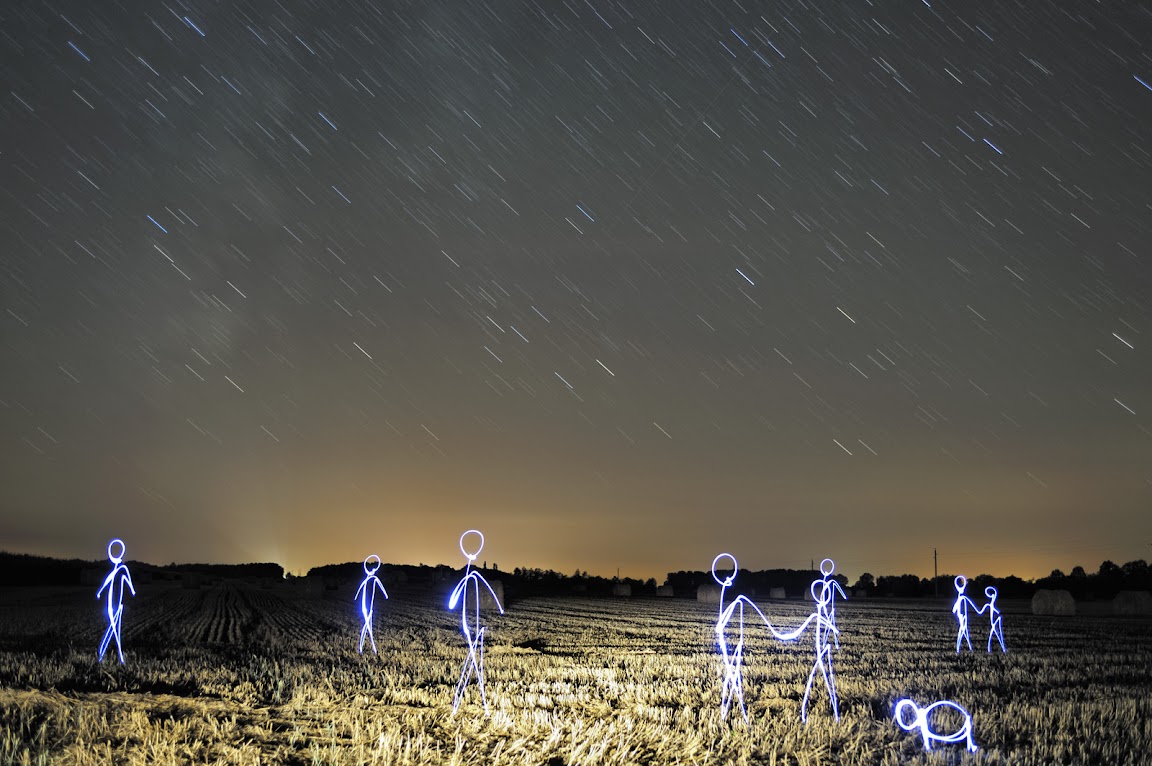The Manga Guide series began modestly with a single title near the end of 2008, The Manga Guide to Statistics, and it was a surprise hit. Now here we are on book eight of the series, with book nine just around the corner. We’ve had Manga Guides to Databases, Calculus, and Molecular Biology. It seems there is no scientific topic that can’t be improved by adorable comic illustrations. Now we see if that even applies to the universe itself.
The premise is quite brilliant. Japanese high school students Yamane and Kanna are the only members of their struggling drama club. They’ve committed to putting on a show at an upcoming arts festival to justify their existence, but are at a loss as to what they will do. Just then, an American exchange student, Gloria, walks in, eager to join the club and displaying a deep enthusiasm for Japanese culture. The three of them put their heads together and settle on doing an adaptation of “The Tale of the Bamboo Cutter”, wherein a tiny girl is discovered inside a stalk of bamboo, only later to be discovered a princess of the moon.
There’s only one problem, this tenth-century tale needs some updating, today’s post-Apollo program audience won’t buy the idea of a kingdom on the moon. Yamane needs to update the story with a more distant, mysterious location. But knowing little about the heavens, more research is needed. Fortunately, Kanna’s brother is an astronomy major at the university, and his favourite professor is more than willing to share the wonders of the universe with an interested audience. But just how far will they need to go to find a home for their princess?
An introductory astronomy course or textbook normally surveys such a wide array of different disciplines and reasoning techniques that most of them can be covered only qualitatively. The hodge-podge nature of the topic thus provides a less obvious intellectual progression than something like molecular biology, calculus, or chemistry, wherein each new topic builds on a previous one. Ishikawa’s chosen narrative arc is both historical and natural to new students of astronomy, first focusing on the skies as seen from the Earth (especially our own moon), then expanding to the rest of the Solar System, our Milky Way Galaxy, other galaxies, and then the overall shape, history, and future of the universe as a whole. The final chapter discusses a number of open problems in astronomy, including the theory of other universes, and the mysteries of dark matter and energy.
Although I wasn’t expecting to learn about Japanese literature in this book, it was really a nice fit, and in retrospect, it’s quite natural to discuss how cultural views of celestial objects and the universe as a whole have changed over time. Ishikawa also ties the birth of new universes back to the original story in the final chapter in a brilliant and very satisfying way.
Throughout the book, we get a good view of why astronomers believed the universe was a particular way, as well as why they were proven wrong, from discarding the Earth-centered model, to recognizing the vastly greater distances of the stars compared to the relatively nearby objects of our Solar System. The text engages the reader with leading questions and logical implications, and the data and thought experiments are well served by the visual illustrations. Ishikawa uses both some classic analogies and some fresh, unique ones to get some difficult concepts across.
I was delighted that he also took time to cover some hot-button topics that a traditional textbook may have left out: Kanna discovers a UFO and by the end of a chapter, she has learned enough astronomy basics to figure out what it really was and why it seemed to be following her; the possibility of life either in our Solar System or elsewhere in the galaxy is discussed, including the specific details of our best nearby candidates, and the more general statistical argument made famous by Frank Drake.
The Manga Guide to the Universe is a perfect blend of lucidly argued basics and unfettered, cutting-edge possibility. One of the best yet in the series (which is saying a lot).
(No Starch Press, 2011)
Article first published as Manga Review: The Manga Guide to the Universe by Kenji Ishikawa on Blogcritics.
